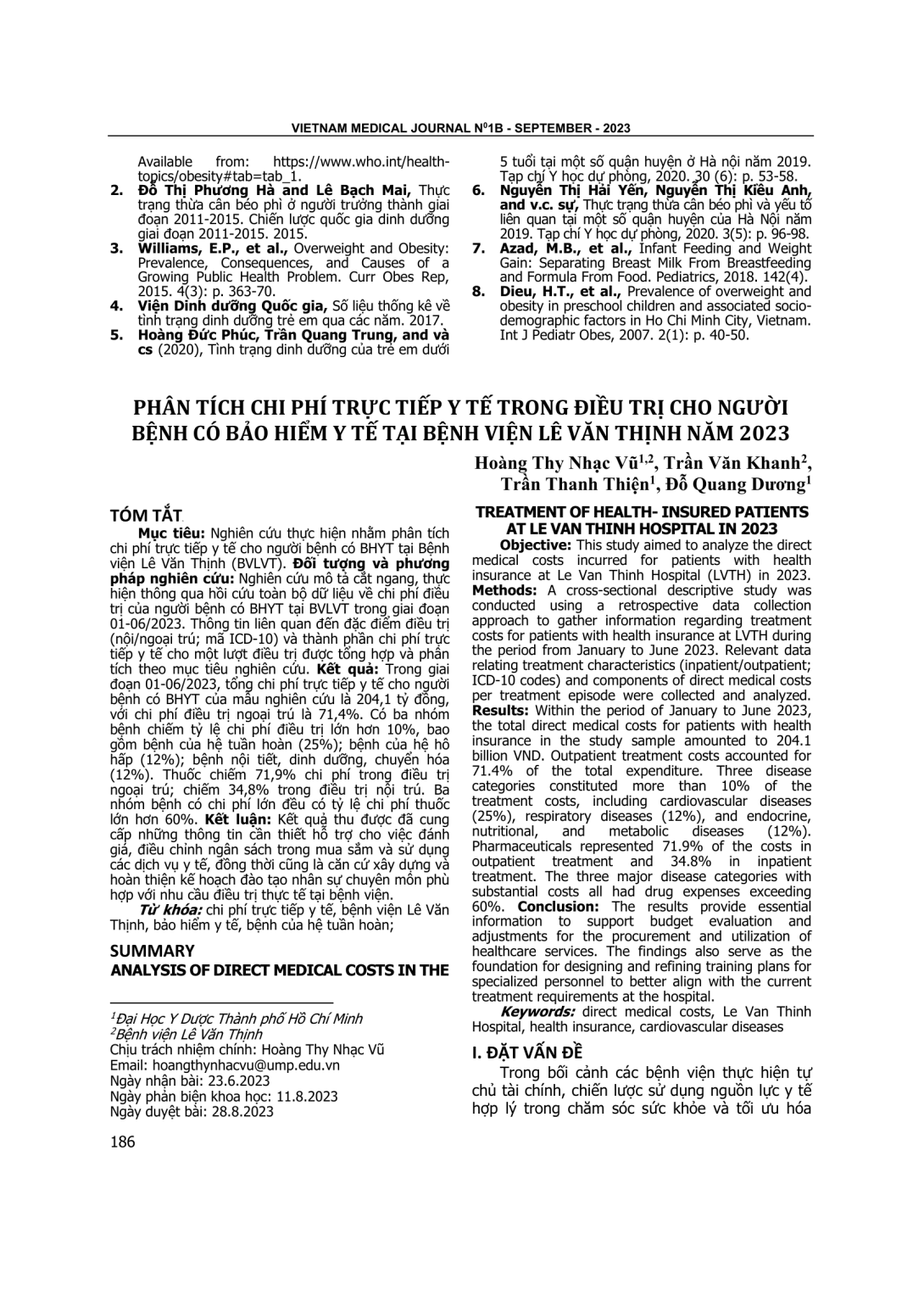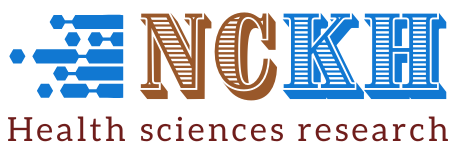
Nghiên cứu thực hiện nhằm phân tích chi phí trực tiếp y tế cho người bệnh có BHYT tại Bệnh viện Lê Văn Thịnh (BVLVT). Đối tượng và phương pháp nghiên cứu: Nghiên cứu mô tả cắt ngang, thực hiện thông qua hồi cứu toàn bộ dữ liệu về chi phí điều trị của người bệnh có BHYT tại BVLVT trong giai đoạn 01-06/2023. Thông tin liên quan đến đặc điểm điều trị (nội/ngoại trú; mã ICD-10) và thành phần chi phí trực tiếp y tế cho một lượt điều trị được tổng hợp và phân tích theo mục tiêu nghiên cứu. Kết quả: Trong giai đoạn 01-06/2023, tổng chi phí trực tiếp y tế cho người bệnh có BHYT của mẫu nghiên cứu là 204,1 tỷ đồng, với chi phí điều trị ngoại trú là 71,4%. Có ba nhóm bệnh chiếm tỷ lệ chi phí điều trị lớn hơn 10%, bao gồm bệnh của hệ tuần hoàn (25%); bệnh của hệ hô hấp (12%); bệnh nội tiết, dinh dưỡng, chuyển hóa (12%). Thuốc chiếm 71,9% chi phí trong điều trị ngoại trú; chiếm 34,8% trong điều trị nội trú. Ba nhóm bệnh có chi phí lớn đều có tỷ lệ chi phí thuốc lớn hơn 60%. Kết luận: Kết quả thu được đã cung cấp những thông tin cần thiết hỗ trợ cho việc đánh giá, điều chỉnh ngân sách trong mua sắm và sử dụng các dịch vụ y tế, đồng thời cũng là căn cứ xây dựng và hoàn thiện kế hoạch đào tạo nhân sự chuyên môn phù hợp với nhu cầu điều trị thực tế tại bệnh viện.
This study aimed to analyze the direct medical costs incurred for patients with health insurance at Le Van Thinh Hospital (LVTH) in 2023. Methods: A cross-sectional descriptive study was conducted using a retrospective data collection approach to gather information regarding treatment costs for patients with health insurance at LVTH during the period from January to June 2023. Relevant data relating treatment characteristics (inpatient/outpatient; ICD-10 codes) and components of direct medical costs per treatment episode were collected and analyzed. Results: Within the period of January to June 2023, the total direct medical costs for patients with health insurance in the study sample amounted to 204.1 billion VND. Outpatient treatment costs accounted for 71.4% of the total expenditure. Three disease categories constituted more than 10% of the treatment costs, including cardiovascular diseases (25%), respiratory diseases (12%), and endocrine, nutritional, and metabolic diseases (12%). Pharmaceuticals represented 71.9% of the costs in outpatient treatment and 34.8% in inpatient treatment. The three major disease categories with substantial costs all had drug expenses exceeding 60%. Conclusion: The results provide essential information to support budget evaluation and adjustments for the procurement and utilization of healthcare services. The findings also serve as the foundation for designing and refining training plans for specialized personnel to better align with the current treatment requirements at the hospital.
- Đăng nhập để gửi ý kiến
